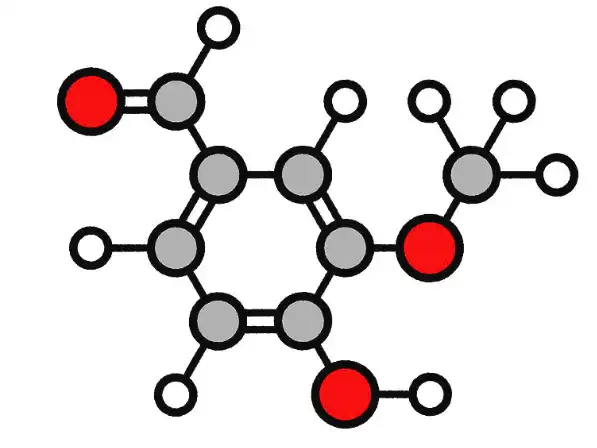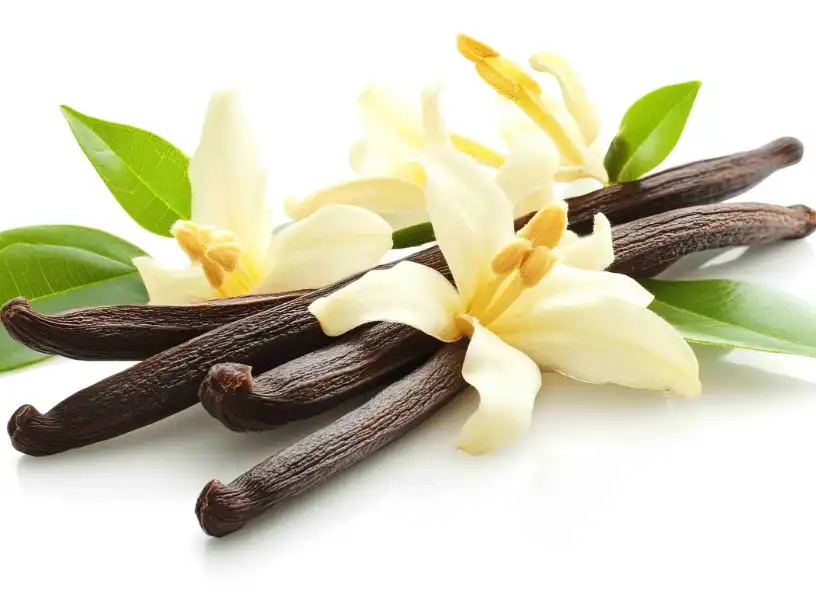How is Vanillin Powder Made from Lignin?
Vanillin powder, a popular flavoring agent used in various industries, has traditionally been extracted from vanilla beans. However, with the increasing demand and limited supply of natural vanilla, alternative methods of production have been developed. One such method involves the use of lignin, a complex organic polymer found in wood and other plant materials. This blog post will explore the process of making vanillin powder from lignin, discussing the various steps involved and the advantages of this production method.

What are the key steps in converting lignin to vanillin powder?
Lignin extraction and preparation
The first step in the production of vanillin powder from lignin involves extracting and preparing the lignin material. This process typically begins with the collection of lignin-rich biomass, such as wood pulp or agricultural residues. The lignin is then separated from other components using various extraction methods, such as alkaline or organosolv processes. Once extracted, the lignin undergoes purification and conditioning to remove impurities and prepare it for further processing. This step is crucial in ensuring the quality and purity of the final vanillin powder product.
Oxidative depolymerization of lignin
The next crucial step in the production of vanillin powder from lignin is the oxidative depolymerization process. This stage involves breaking down the complex lignin structure into smaller, more manageable components. Various oxidation methods can be employed, including the use of chemical oxidants, enzymatic treatments, or electrochemical techniques. The choice of oxidation method depends on factors such as efficiency, cost-effectiveness, and environmental considerations. During this process, the lignin molecules are fragmented, and functional groups are modified, creating intermediates that can be further transformed into vanillin.
Conversion and purification of vanillin
The final stage in the production of vanillin powder from lignin involves the conversion of the oxidized lignin fragments into vanillin and subsequent purification. This step typically includes a series of chemical reactions and separation processes to isolate and concentrate the vanillin molecules. Techniques such as crystallization, distillation, and chromatography may be employed to achieve high purity levels. The resulting vanillin is then dried and processed into a fine powder form, ready for use in various applications. Quality control measures are implemented throughout this stage to ensure the final vanillin powder meets industry standards and specifications.

What are the advantages of producing vanillin powder from lignin?
Sustainability and environmental benefits
One of the primary advantages of producing vanillin powder from lignin is its sustainability and positive environmental impact. Lignin is an abundant and renewable resource, often considered a waste product in the paper and pulp industry. By utilizing lignin for vanillin production, we can reduce waste and create value from a previously underutilized material. This process also helps to decrease the reliance on natural vanilla beans, which are often grown in environmentally sensitive areas and require significant resources for cultivation. Additionally, the production of vanillin powder from lignin typically has a lower carbon footprint compared to traditional methods, contributing to a more sustainable and eco-friendly flavoring industry.
Cost-effectiveness and scalability
Another significant advantage of producing vanillin powder from lignin is its cost-effectiveness and scalability. The abundance of lignin as a raw material and the potential for large-scale production make this method economically viable. Compared to the labor-intensive and time-consuming process of extracting vanillin from vanilla beans, lignin-based production can be more efficient and less expensive. This cost-effectiveness allows for the production of larger quantities of vanillin powder, meeting the growing demand in various industries such as food and beverage, pharmaceuticals, and cosmetics. The scalability of this production method also provides flexibility in adjusting output to market demands, ensuring a stable supply of vanillin powder.
Consistency and quality control
Producing vanillin powder from lignin offers advantages in terms of consistency and quality control. Unlike natural vanilla, which can vary in flavor and aroma due to factors such as growing conditions and processing methods, lignin-derived vanillin can be produced under controlled conditions. This results in a more consistent product with predictable flavor profiles and chemical composition. The ability to control the production process also allows for the implementation of strict quality control measures, ensuring that the vanillin powder meets specific purity and safety standards. This consistency and quality control are particularly important for industries that require precise flavor formulations and reliable ingredient performance.
What are the challenges in producing vanillin powder from lignin?
Technological complexities
One of the main challenges in producing vanillin powder from lignin lies in the technological complexities involved in the process. The heterogeneous nature of lignin and its complex structure make it difficult to achieve high yields and purity levels of vanillin. Developing efficient and selective oxidation methods that can effectively break down lignin while maximizing vanillin production remains an ongoing area of research. Additionally, the separation and purification of vanillin from the reaction mixture can be challenging, requiring sophisticated techniques and equipment. Overcoming these technological hurdles is crucial for improving the efficiency and commercial viability of lignin-based vanillin powder production.
Regulatory and consumer acceptance
Another challenge in the production of vanillin powder from lignin is related to regulatory approval and consumer acceptance. As a relatively new production method, lignin-derived vanillin may face scrutiny from regulatory bodies and require extensive testing to ensure its safety and equivalence to traditional vanillin sources. Moreover, consumer perception and acceptance of vanillin powder produced from lignin may pose challenges, particularly in markets where natural and clean label products are in high demand. Educating consumers about the sustainability benefits and safety of lignin-derived vanillin powder is essential for overcoming these hurdles and gaining wider acceptance in the market.
Optimizing yield and purity
Optimizing the yield and purity of vanillin powder produced from lignin presents ongoing challenges for manufacturers. The complex nature of lignin and the multiple reaction steps involved in its conversion to vanillin can result in relatively low yields compared to other production methods. Improving the efficiency of the oxidation and conversion processes to maximize vanillin yield while minimizing byproduct formation is a key area of focus for researchers and industry professionals. Additionally, achieving high purity levels of vanillin powder from lignin can be challenging due to the presence of other lignin-derived compounds. Developing more effective purification techniques and refining the overall production process are crucial for enhancing the quality and competitiveness of lignin-derived vanillin powder in the market.
Conclusion
The production of vanillin powder from lignin represents a promising and sustainable alternative to traditional methods. By utilizing an abundant waste product from the paper and pulp industry, this process offers environmental benefits and cost-effective scalability. While challenges such as technological complexities and regulatory hurdles exist, ongoing research and development efforts continue to improve the efficiency and viability of lignin-based vanillin production. As the demand for vanillin continues to grow across various industries, the use of lignin as a renewable source for vanillin powder production is likely to play an increasingly important role in meeting global flavor and fragrance needs.
Shaanxi Yuantai Biological Technology Co., Ltd. (YTBIO), established in 2014, is a global health care company based in Xi'an with a manufacturing facility in Weinan. We specialize in health food ingredients (such as Herbal Extracts, Magnesium Threonate, and Creatine Monhydrate) and cosmetic ingredients (including Sponge Spicule, Retinol, Glutathione, and Arbutin). We work with partners in Europe, America, Southeast Asia, and Korea. With a warehouse in Rotterdam for EU distribution and plans for U.S. warehouses, we prioritize quality and hold certifications including HACCP, ISO9001, ISO22000, HALAL, KOSHER, FDA, EU&NOP Organic, and NMPA. We also assist Korean clients with KFDA registration. Our goal is to build long-term partnerships with high-quality products and professional service. For inquiries, contact us at sales@sxytorganic.com or +86-029-86478251 / +86-029-86119593.
References
- Fache, M., Boutevin, B., & Caillol, S. (2016). Vanillin production from lignin and its use as a renewable chemical. ACS Sustainable Chemistry & Engineering, 4(1), 35-46.
- Tarabanko, V. E., & Tarabanko, N. (2017). Catalytic oxidation of lignins into the aromatic aldehydes: general process trends and development prospects. International Journal of Molecular Sciences, 18(11), 2421.
- Lersch, M., Trinh, N. B., Arendt, E. K., & Lynch, K. M. (2019). Vanilla flavor production from lignin: A review. Journal of Agricultural and Food Chemistry, 67(42), 11589-11599.
- Zhu, Y., Mao, Y., & Chen, W. (2020). Recent advances in lignin valorization with chemical catalysis. Bioresource Technology, 310, 123442.
- Pinto, P. C. R., Costa, C. E., & Rodrigues, A. E. (2013). Oxidation of lignin from Eucalyptus globulus pulping liquors to produce syringaldehyde and vanillin. Industrial & Engineering Chemistry Research, 52(12), 4421-4428.
- Zhao, X., Cheng, K., & Liu, D. (2009). Organosolv pretreatment of lignocellulosic biomass for enzymatic hydrolysis. Applied Microbiology and Biotechnology, 82(5), 815-827.
_1737093401309.png)
